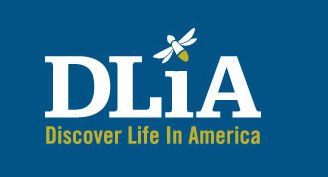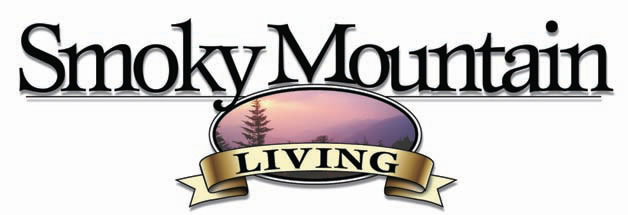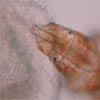
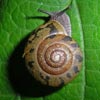
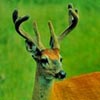
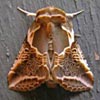
- The Smokies are renowned for diversity on a variety of levels -- from plant communities and habitats to species and genetic variation. Non-microbial species estimates in the park vary from about 50,000 to 100,000. Over 19,000 are currently known.
- The All Taxa Biodiversity Inventory (ATBI) seeks to discover the others -- including the smaller creatures that are the hidden, but crucial members of the ecosystem. Many are so small that most microscopes are not adaquate to view them. The ATBI also seeks to reveal critical ecological connections between soils, geology, and habitats.
- As project scientists continue to make discoveries, we will be updating our classification pages and species information. In biological terminology, this classification system is known as a "taxonomic system" or "taxonomy". Each individual level of this hierarchical system is called a "taxon."
- In the following table the top level taxa of park organisms are listed. However, the classification outlined below may change as this web page is updated to reflect current scientific understanding of the relationships between organisms. The links in the Kingdom column will allow you to venture into the next lower level of taxa applicable to the specific taxa term clicked.
- Now Discover Life in America invites you to venture into the fascinating realm of organisms that have been discovered inhabiting our Great Smoky Mountains National Park!
| All Taxa Biodiversity Inventory of Life in the Smokies - Varieta Magnifico! | |||
| Domain | Kingdom | Phylum/Division | Common Names |
| ARCHAEA | Archaea | Euryarchaeota | Methanogens & Halophiles |
|
|
|||
| BACTERIA | Eubacteria | Acidobacteria | Bacteria |
| Actinobacteria | Bacteria | ||
| Bacteroidetes | Bacteria | ||
| Cyanobacteria | Photosynthetic Blue-green Bacteria | ||
| Firmicutes | Bacteria | ||
| OP10 | Bacteria (possibly will be Armatimonadetes) | ||
| Planctomycetes | Aquatic bacteria | ||
| Proteobacteria | Bacteria | ||
| Verrucomicrobia | Bacteria | ||
|
|
|||
| EUCARYA | |||
| Animalia | Acanthocephala | Spiny-headed Worms | |
| Annelida | Segmented Worms | ||
| Arthropoda | Insects, arachnids, crustaceans, millipedes, centipedes, etc. | ||
| Bryozoa | Moss Animals | ||
| Chordata | Fish, amphibians, Birds, Mammals, Reptiles, etc. | ||
| Cnidaria | Freshwater jellyfish and hydra | ||
| Gastrotricha | Freshwater microscopic gastrotrichs | ||
| Mollusca | Clams, Snails & Slugs | ||
| Myxozoa | Aquatic slime animals | ||
| Nematoda | Round worms | ||
| Nematomorpha | Horsehair worms | ||
| Nemertea | Ribbon or proboscis worms | ||
| Platyhelminthes | Flatworms | ||
| Porifera | Sponges | ||
| Rotifera | Wheel animals or rotifers | ||
| Tardigrada | Tardigrades | ||
|
|
|||
| Chromista | Myzozoa | Myzozoa | |
| Ochrophyta | Diatoms and Yellowgreen Algae | ||
| Pseudofungi | Pseudofungi | ||
|
|
|||
| Fungi | |||
| Ascomycota | Sac fungi | ||
| Basidiomycota | Club fungi | ||
| Chytridiomycota | Little sporepot fungi | ||
| Deuteromycota | Deutero fungi | ||
| Microsporidia | Microsporidian parasites | ||
| Zygomycota | Zygote molds | ||
|
|
|||
| Plantae | Anthocerotophyta | Hornworts | |
| Bryophyta | Mosses | ||
| Charophyta | Stoneworts, etc. | ||
| Chlorophyta | Green Algae | ||
| Coniferophyta | Conifers | ||
| Equisetophyta | Horsetails | ||
| Hepaticophyta | Liverworts | ||
| Lycopodiophyta | Lycopods | ||
| Magnoliophyta | Flowering plants | ||
| Pteridophyta | Ferns | ||
|
|
|||
| Protozoa | Amoebozoa | Amoeboid protozoa and slime molds | |
| Cercozoa | Amoeboid and flagellate protozoans | ||
| Ciliophora | Ciliated protozoans | ||
| Sarcomastigophora | Motile protozoans (mostly parasitic) | ||
|
|
|||
| Stramenopila | |||
| Bacillariophyta | Diatoms | ||
| Chrysophyta | Golden algae | ||
| Tribophyta | Yellow-green algae | ||
|
|
|||
| VIRUS | Viruses | Picornavirales | Picorna viruses |
| Tymovirales | Tymo viruses | ||
Note: These taxa pages are a work-in-progress. The fact that particular taxa cannot be found on our hierarchial taxa lists does not mean that the organisms are not inhabiting the park. Your help in identifying these missing taxa, and then presenting science-based proposals and funding for inventorying these hidden, yet intrinsically valuable life forms is much appreciated by the DLIA staff and Board of Directors, as well as the Park's Inventory and Monitoring personnel.
